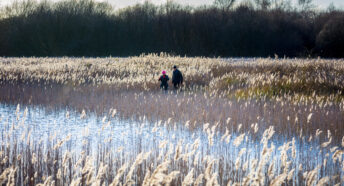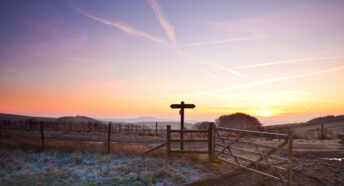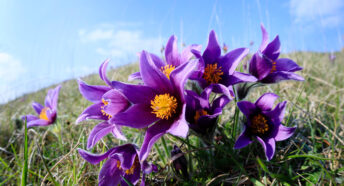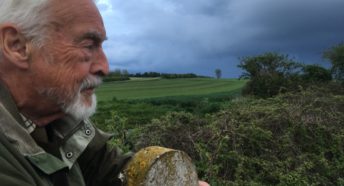John Wright on the charm of the Dorset downlands
‘God gave all men all earth to love / But since our hearts are small / Ordained for each one spot should prove / Belovèd over all.’
For Kipling, that belovèd place was his home for the last 39 years of his life: Sussex by the sea. For your author, it is the chalk downlands of West Dorset. For both of us, our small hearts are entrapped by home – the fate of most people, or at least those who are fortunate.
Kipling’s second home, in the Sussex Weald at Burwash, is encompassed above and below by the North and South Downs. My part of the world is at the western tip of the same contiguous Cretaceous chalk that makes up so much of southern England. This vast landscape is sometimes known as the ‘Chalk Group’ or, much more affectionately to my mind, ‘The Chalk’.
Our first home in West Dorset was atop what I suppose I might call the second-to-last hill in the 200-mile rock formation. D and I moved to our lofty new home over 40 years ago on a day in late April with snow 10cm thick on the ground and still falling. We had no money and could not afford a car. If we wanted to buy provisions, we would walk to the village – down the hill, through the woods, up the next hill, along the top and down the other side.
Walking back was worse as it involved carrying groceries over two ups and only one down. There is nothing quite like a four-mile hill walk to make you shop carefully, and it was here and out of necessity that I developed my foraging skills.
The last part of the walk to the village is known to everyone as ‘The Drift’. The name ‘Drift’ seemed to me to have a fairly obvious etymology, and instinct was confirmed by the Oxford English Dictionary (OED), which tells us that it derives from the early English words, drif or drifan or drifen, meaning ‘drive’, in this case to drive stock from one place to another. Furthermore, The Drift was once (and sometimes still is) called The Driftway, which, the OED explains, is a lane or road along which stock is driven to market or pasture. The Drift is a ‘drove road’.
Drove roads exist or existed wherever there is or was stock to drive, which was once nearly everywhere in Britain, as is reflected in the name ‘Driftway’ appearing on maps all over the country. Many of our modern roads were once drove roads. Quite how old The Drift may be has defied my investigative skills, but it could easily be Iron Age or earlier as there is an Iron Age settlement alongside it, half a mile from the A37. Roads and pathways are the most persistent of human constructs as they gain permanence from use.
About the author

This is an exclusive extract adapted from John Wright’s forthcoming book, The Observant Walker: Wild Food, Nature and Hidden Treasures on the Pathways of Britain. It’s a personal guide to the edible nature, wildlife and history to be found around us when we walk.
John Wright is a naturalist, fungi expert, forager and author. His previous book, The Foragers Calendar, won the Guild of Food Writers Food Book of the Year 2020.
A version of this article was originally published in CPRE’s award-winning magazine, Countryside Voices. You’ll receive this as well as access to other benefits including discounts on attraction visits and countryside kit from major high street stores when you join as a CPRE member. Join us now.









